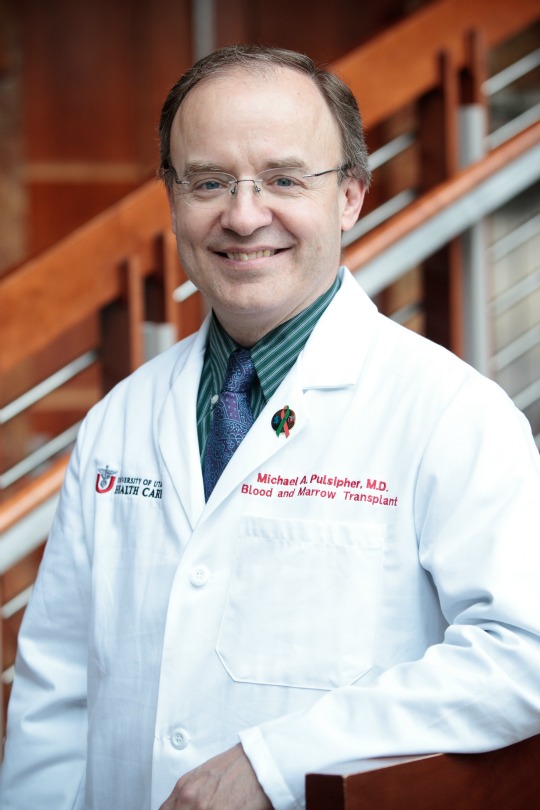Dr. Michael Pulsipher knows that for a kid with cancer, survival often comes down to just a few bad cells amidst an ocean of healthy ones. That’s why he’s studying a method to better screen kids with acute lymphoblastic leukemia, or ALL, for those few bad cells that can be left after treatment.

Dr. Michael Pulsipher, who works at Children Hospital Los Angeles, is studying a cancer detection method called next-generation sequencing.
Most ALL relapses are caused by just a few cancer cells that remain in the body after treatment. Those few cells can fly under the radar of current screening methods, only showing themselves once they’ve multiplied enough.
But what if we had a better way to detect those few sneaky cancer cells before they’ve had a chance to grow?
Dr. Pulsipher, a St. Baldrick’s researcher at Children’s Hospital Los Angeles, may have found just that.
This highly sensitive method is called next-generation sequencing, and what Dr. Pulsipher discovered is extraordinary.
When looking at kids with aggressive leukemias who had gone through a bone marrow transplant, this method predicted whether a child would relapse much more accurately than other techniques.
In fact, next-generation sequencing could pinpoint levels of residual disease that other methods couldn’t.
“The unique difference about this particular technique is, rather than one in 10,000 cells, now you can detect one in 10 million cells,” Dr. Pulsipher said.
But what is next-generation sequencing and how does it work?
In ALL, the leukemia cells do something special. Immune system cells — called B cells and T cells — rearrange themselves in a particular way that is totally unique to each cell in order to produce antibodies. When these cells mutate into leukemia blasts, they retain that unique arrangement.
“Remember that cancer creates a clone,” Dr. Pulsipher said. “So, if you have a B cell that’s rearranged in a particular way and now it becomes a cancer cell, now all of a sudden, that barcode — that signature where that rearrangement occurred in the B cell — is replicated in all the cancer cells.”
By searching for that unique signature, doctors can spot leukemia cells in a kid’s body, even if it appears the child is in remission.
And that’s exactly what Dr. Pulsipher and his colleagues did.
Their study showed that sequencing could detect cancerous cells and predict relapse just 30 days after transplant.
Other methods can only accurately predict relapse eight months to a year after transplant. That’s too late, Dr. Pulsipher said. Catching potential relapse early is crucial — the earlier doctors can intervene, the better chance a child has to survive.
But next-generation sequencing wouldn’t only benefit kids at high risk for ALL relapse. Dr. Pulsipher found that the method also identified kids who were highly unlikely to relapse after initial treatment. Having this information would give doctors the opportunity to cut back on further, intense treatments for these low-risk kids, and less treatment would then translate into fewer side effects as the child gets older.
“If we can then make sure that our patients are able to grow normally, make sure that our patients have a decreased risk of second cancers, then we’re very happy about that,” he said.
Learn about late effects and how they have impacted 13-year-old Grace >
This work was done through the Pediatric Blood and Marrow Transplant Consortium (PBMTC), which is supported by St. Baldrick’s.
Helped along by the funding from St. Baldrick’s, the researchers involved in the PBMTC have been working at a furious pace, opening four clinical trials in just five years.
In fact, Dr. Pulsipher said, St. Baldrick’s has been the cornerstone supporting that incredible productivity.
“The partnership PBMTC has made with St. Baldrick’s made PBMTC blossom,” he said.
This holiday season, fund research that helps kids with cancer get back to being kids. Give today.
Read more on the St. Baldrick’s blog:


 SBF
Tweets »
SBF
Tweets »